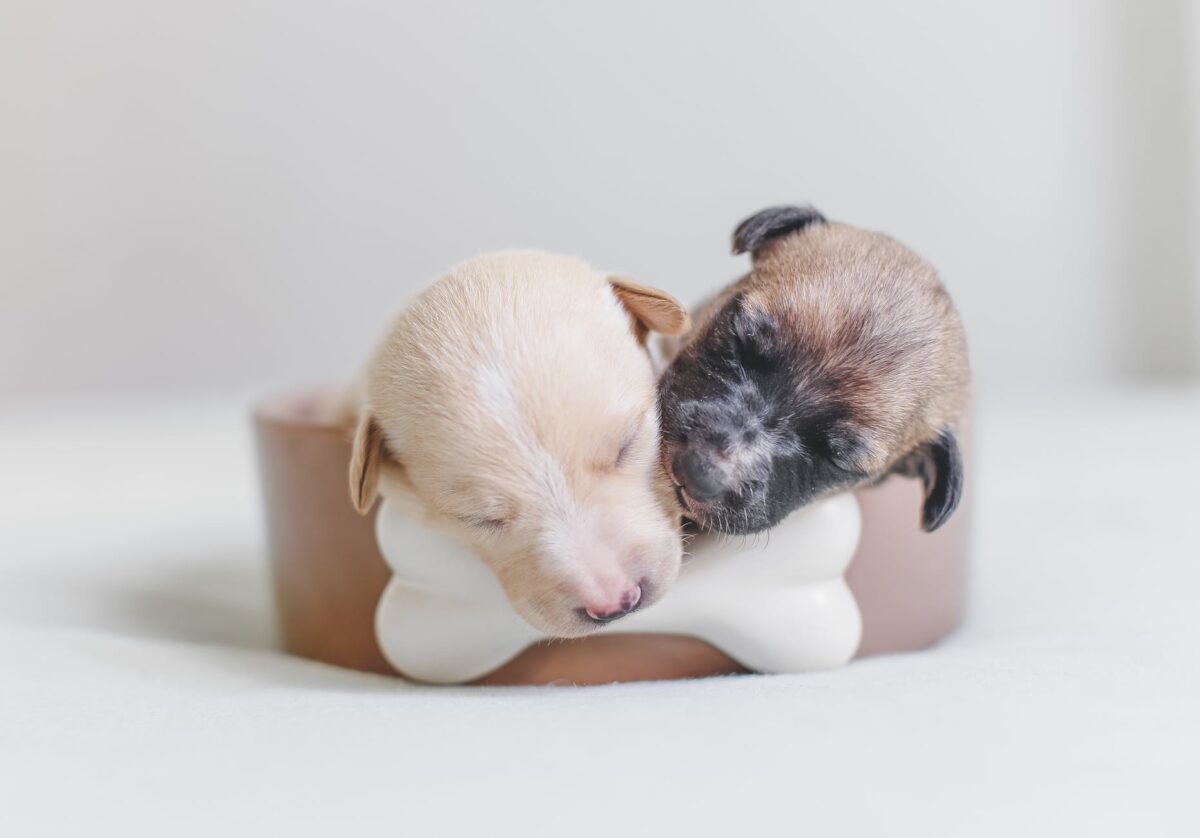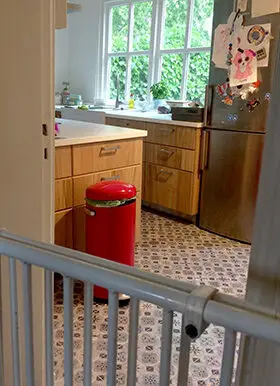What supplies do i need for whelping puppies?. Proper preparation is half the battle. You have already studied the breed of your future dog and what is involved in raising and training a puppy (or adult dog), and what costs you will have to deal with.
You should also know what to look out for when selecting a breeder. It is really great if you have already learned a bit about dog behaviour, how dogs think and what emotions they experience. That will soon make it all more comfortable and better to understand.
What you really need
We asked dog experts on Facebook what they really think is indispensable when you take a dog into your home. It is striking that most agree that these are not material things that are most needed, but above all, a lot of love, patience, time and a sense of humour.
You would like to go shopping, and we understand that best! It’s nice to buy stuff before your new roommate arrives, right? Let’s start with the anticipation!
The ultimate shopping list

- Longline
- Appropriate harness or collar
- Water bowl
- Basket/pillow/blanket (a safe, quiet place to sleep is essential, a puppy sleeps about 18-20 hours per day)
- Puppy run: this is larger than a crate and gives the puppy more freedom of movement and more options to choose where he prefers to sleep, this also prevents your puppy from developing unwanted behaviour
- Nail scissors ( practice !)
- Reward snacks ( how and when do you reward ?)
- Poop bags
- Enters
- Challenge in the form of brain work, puzzles, toys
- Chew bones, dried snacks or tripe sticks, as long as it is not too hard.
- Kitchen rolls for accidents at home (and plenty of clean socks;))
- Medal with name and telephone number
- On the road: make sure you can safely transport your puppy in the car
- First aid kit
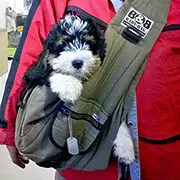 Optional
Optional
- Bench
- Feeding trough
- Dress for the couch
- Dog insurance
- Urine remover
- Stair gate (can also be placed in doorway)
- If you have a smooth floor ; rugs so that the puppy does not slip all the time, this is not good for muscle and bone development
- If you enjoy taking long walks, you will need to lift your pup at some point. He cannot walk that far yet and is tired quickly; a baby carrier or trolley offers a solution (Photo baby carrier: Monique D Koelewijn)
Feeding trough is not really necessary!
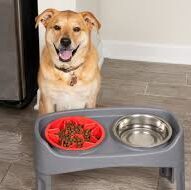
By default, the food bowl is often at the top of these lists, but you can do food in a much more creative and fun way! Let your dog sniff and be busy with his meal. Place the complete meal in a Kong or anti-gnaw tray .
Which is also very nice if you have an adult dog: sprinkle the food in your backyard. This way your dog can sniffle his food, something all dogs enjoy doing! This way you immediately give your dog a fun activity and he will not eat his food in one big bite.
Handy tip
“I always keep small cans that contain, for example, mints. I put little rewards in there. Nothing soggy in your coat pocket and rattling will sometimes help to get the puppy back to you quickly. Many cans, one in each jacket, you can’t forget them. ”
Make your house puppy proof!
When a child starts to crawl or walk, you know that you have to arrange your house differently. Fragile, expensive items are placed out of reach, doors are secured, stair gates are placed and sockets are shielded.
This is how it works with a puppy! We’ve devoted a complete article to puppy proofing your home. How do you make your home safe for your pup, and how can you protect your valuables from those biting puppy teeth?
Consider other housemates
Do you already have a cat in your house or maybe another pet? Then try to calmly introduce the puppy to the other pet. Prevent them from chasing each other or making one afraid of the other.
Make good agreements between family members, how you want to raise the puppy, what is and is not allowed in the house. Then the rules are clear for everyone, including the puppy!
Do you have a family with young children or do children regularly come over? Then teach them some basic rules regarding dog handling. Read here 5 tips for maximum safety between dog and child.
Newborn dog puppies, how to care for them?
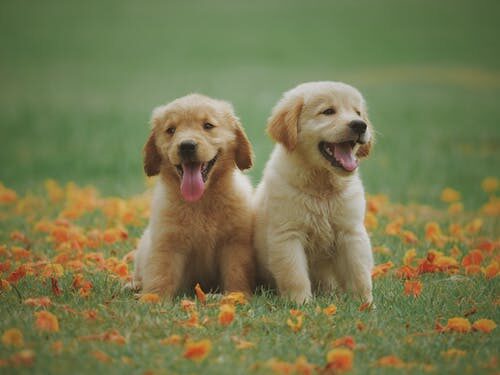
Raising a newborn dog at home involves taking care of aspects such as humidity in the puppies’ room and knowing the importance of temperature for newborns. The dogs are born blind and deaf and until they are three weeks old, have limited mobility. They are highly dependent on the care of the mother or, in her absence, of their owners. Providing the supplemental food they need and ensuring the emotional development of puppies is essential in caring for a newborn puppy dog.
After giving birth to the dog, it is advisable to check the health of the little puppies. It is essential to make sure that they do not have any problems, but that they are healthy and robust. One of the most reliable indicators of the correct development of the newborn dog is its weight, which has to be according to its age and breed. To ensure that this is the case, puppies should be weighed daily to check that they double in weight between the seventh and tenth day of life.
Puppy room humidity
Females, in general, are able to care for their offspring without problems. If they have enough milk and are provided with a suitable resting place, adequate humidity and temperature, it is most likely that the first three weeks of life of the puppies, which are the most delicate, will proceed normally and without problems.
The housing of the female and herd must have a humidity of 55%
In order for the mother and puppies to be accommodated comfortably and adequately, above all, it must be taken into account that the moisture in the room ranges between 55% and 65%. In this way, newborns will not become dehydrated. However, the percentage of water in the air should also not be very high because, then, there will be a risk that the young will contract diseases caused by fungi, which grow in very humid and warm environments.
The importance of temperature for neonates
The puppy does not tremble until three weeks of life, so it does not know how to protect itself from the cold either
The newborn dogs have developed defence mechanisms of the body which would keep them a temperature suitable. When they are cold, they do not tremble until they are over three weeks old. Therefore, it is essential to help them maintain adequate body temperature. The first week of life, it must oscillate between 30ºC and 32ºC. In the second week, the temperature can be reduced to 26ºC or 28ºC and, from the third week, 22ºC is suitable.
If the ambient temperature is too low, hypothermia occurs in puppies, which results in the dog’s lack of activity -or movement-, so it will not be able to suckle and may die if it is not remedied in time.
Supplementary food for the small dog
The mother’s milk production begins to decrease when a month has passed since the cubs were born. By then, however, the nutritional needs of small dogs continue to progress. For this reason, it is advisable to gradually provide them with extra food from the third week of age.
Porridges are sold in the market, but another option is to use the specific feed for puppies, to which water can be added to acquire a porridge texture. The advantage of this alternative is that, when it is time to separate from the mother, around seven weeks of life, the puppy will be very well adapted to its new food.
Another highlight is that both the mother and the cubs have to be dewormed with some frequency. You should also start with the vaccination schedule to ensure the health of the animals. Who can best advise us on both aspects is the veterinarian, who will advise at the same time on the most suitable diet for both the female that has just given birth and for the puppies.
Puppies emotional development
The most critical period for the puppy to learn to be sociable is between the first three and twelve weeks of life. This is when the dog learns more about new situations. According to Manuel Lázaro, veterinarian of the Mirasierra clinic in Madrid, “it is essential to pet the puppies from 15 days of age, when they open their eyes, because these physical contacts, together with our voice and other sounds that are not shrill, they help the puppy adapt to its new environment. “
Correct socialization helps the dog to relate to people and other animals
Correct socialization will help you control yourself when you bite the female and siblings while playing, so as not to harm them, and will make it easier for you not to be afraid of sounds or to interact with people and other animals. The experiences that the puppy does not live will be more difficult to assimilate and accept as an adult. An example: if he is not related to people or other dogs, it is most likely that, after a few years, he will be aggressive with his peers, as well as shy and fearful with people.
Along with the experiences with humans and animals, the puppy will be a more balanced and better-socialized dog if it is with its mother and siblings, until at least eight weeks of age. From them, you will learn the rules for relating to other congeners: how to play, how to abide by the hierarchy of the pack or how to communicate. These questions will be of vital use to him to move freely between people.
Six tips for caring for the puppy
1. Check the general condition of the puppies when they are born to detect possible malformations or health problems.
2. Take care of the mother’s and puppies’ accommodation, especially with respect to the environmental temperature and humidity.
3. Weigh neonates daily to check that they gain weight.
4. From the third week of age, small dogs need a supplementary supply of food.
5. Keep the puppy with its mother and siblings until seven weeks of age, so that it learns the appropriate behaviour guidelines.
6. Socializing the puppy well includes the relationship with people and other animals, as well as the experimentation of different experiences.
To do list
- As described above: make your house puppy proof
- Try to be a lot available to your pup during the first weeks / months . After all, it’s just a baby. Being alone is quite scary for a young puppy, he is still used to the warmth of his mother. Leaving it alone should be built up gradually. If necessary, arrange something with your employer.
- Veterinarian : are you going to find out which doctors and clinics are in your area? Make sure your pup has positive experiences with the vet! Vet training is an idea.
- Dog School : You can already sign up for a puppy course to make sure there is room. What should you pay attention to when choosing a dog school?
- Grooming salon : does your puppy have a coat that needs more care? Then it is advisable to also look around for a grooming salon in your area.
- Register chip number with Companion Animal Database , this is the best-known database in the Netherlands.
- Let your neighbors know that a dog is on the way, so it comes as no surprise to them.
- Already arrange puppy sitters for when you are away from home, especially for the first period.
Tips for day X
A fantastic time awaits you. Start your life together in peace and quiet and get to know each other. While you are only expanding your real life, the entire previous world is changing for your dog. Experience how amazingly quickly your four-legged friend can find its place.
Ideally, you welcome the new family member to your family and take a few days off for this. Make the environment “dog-safe”: curiosity often drives puppies into new situations that can also be dangerous. Seal medication, household cleaners and cigarettes as well as chocolate – the delicious candy can be hazardous for dogs.
And no matter how tempting – please put off family and friends for a few days. Take the time together to get a sniff and find a familiar rhythm. Only when the dog has got used to you as a caregiver, others may also like to welcome the new family member.
Give the new dog time to get used to it.
The strength lies in the rest – and during the settling-in period, your dog and you will need a lot of energy. Your little friend is entering a new world full of exciting impressions, unknown rules and daily routines – good to know that dogs are true masters of adaptation.
How long it takes for your dog to get used to it depends on many factors: For example, older dogs are often easier to manage than a puppy.
The better the characteristics of the dog suit you, the faster you can get used to the new home – the animal is no different than humans. Small dogs are so cute, but also full of the urge to discover and conquer the world: With a few tricks, you can steer the little bundle of energy in the right direction on the way to becoming the best friend of man.
New home, new adventures
Allow the new family member to rest to thoroughly explore his new realm. In the beginning, secure danger areas for puppies such as high stairs, but also cleaning agents and medication. First, introduce the little guy to his dog basket, his rest area and all other residents.
Support the acclimatization for the dog with a quiet environment, walks together, cosy cuddling rounds on the sofa and exuberant games. Get the four-legged partner used to skin and claw care at an early stage. For all processes that are carried out involuntarily, calm but confident words and small treats are the right choices. And how long does it take a dog to get used to it? There is no rule of thumb for this because every dog has different needs.
Is something going wrong?
If the start is a little bumpier than hoped, the first thing to do is not to despair. Is the dog not eating? This can be due to excitement. Find out what food the dog has been used to and feed it (for now). Is it a puppy? Find out what the dog likes – after all, people don’t like all foods equally.
Are you struggling with housekeeping? Watch your new dog closely. So you don’t miss the crucial moment when it “pushes”. Walk the dog regularly and sufficiently often. Puppies take a little longer to get the business deal under control.
And pay attention to socialization with other dogs at an early stage: Visit a puppy lesson together or the local dog playground. Dogs are very sociable creatures and enjoy playing with their own kind. Don’t be too scared yourself if your (canine) baby fights with others. This way, the familiarization of the dog works best and as stress-free as possible for all involved.
In small steps to an unbeatable team
How many books can there be in dog training? How many experts offer their knowledge to help educate the four-legged friend? In the mass of information and contact points, you quickly lose track of things. Of course, there is no all-round program that solves all apparent problems.
But there is a foundation you can build on: it is trust, respect, consistency, and understanding of your new friend’s natural needs. This applies to the puppy from the breeder as well as to the little darling of the animal protection association. How long the familiarization phase will be cannot be predicted. If the chemistry is right, the bond between you and your new four-legged friend will often tighten within a few days.
Welcome, Home!
Anyone who deals with the nature of a dog knows that dogs love clear guidelines. These give him the security he needs to build a bond with the pack. This suits you as a dog owner during the upbringing. Always remember that consequence is valuable for his well-being. Dog training begins when the four-legged friend enters his new home. You will understand the insecurity of the animal, respect its fears and consistently convey the rules in the original pack.
A dog moves in A few tips
- Education goes through the stomach – treats (in moderation) directly related to praise for positive behaviour do their job as positive conditioning.
- Prevent the dog from jumping on by merely pulling your knee up from the beginning of the training or turn around and walk away.
- Basic obedience should include simple commands such as seat, place, ugh for currently undesirable actions and off for behaviours that are never accepted in principle.
- Short-term barking is accepted. If barking or other adverse reactions continue, send the animal into its place.
- Initially set up the dog’s sleeping area near you. This is the only way he feels belonging.
- Staying alone is trained in small steps. If you go outside without a dog, avoid goodbyes. Your departure and return should be standard actions for the dog.
- Treat any dog that may already be preferred. This consolidates its position and directs the new animal to its place and prevents the instinct to defend the territory of the first dog.
- Accept any initial growl or friction. These serve the natural reclassification of the ranking.
Allow the animal to move in quietly. All family members should accept that calm and patience are the keys to settling in quickly. Lots of love, time and undivided attention for a few days work wonders.
Enjoy!
Be sure to enjoy the antics of your new puppy! Puppy time is passing quickly and before you know it you have an adolescent at home.

